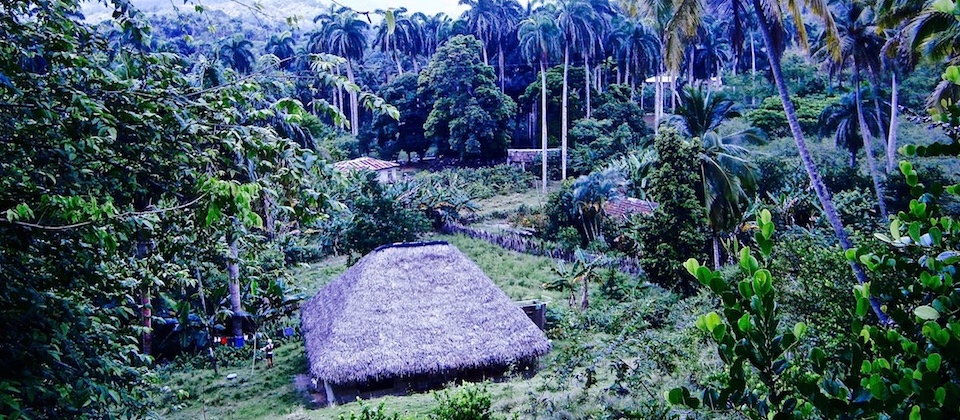
Published on 8 December, 2018.
Different from what happens in other countries, Cuba’s national parks and biosphere reserves not only allow you to discover unique fauna and flora species – you can also visit farmer families living in their midst.
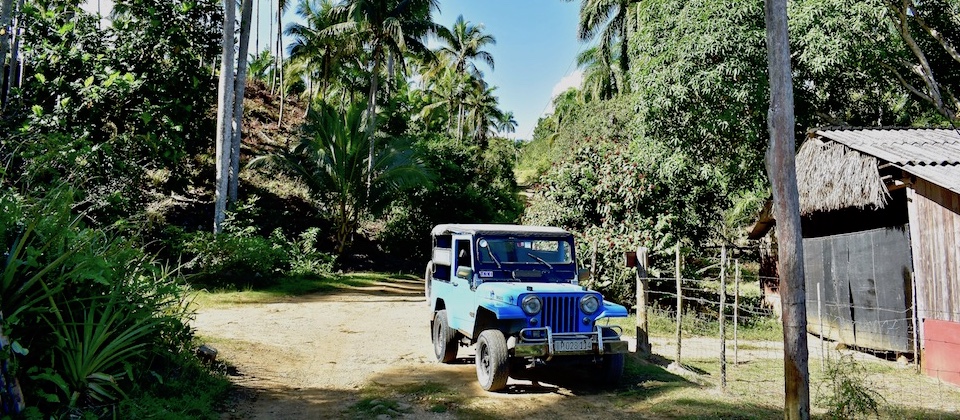
Established in those territories way before they were designated as protected areas, such small communities develop a conservation culture and ecological farming practices – and you can learn more about them during your visit to parks and reserves.
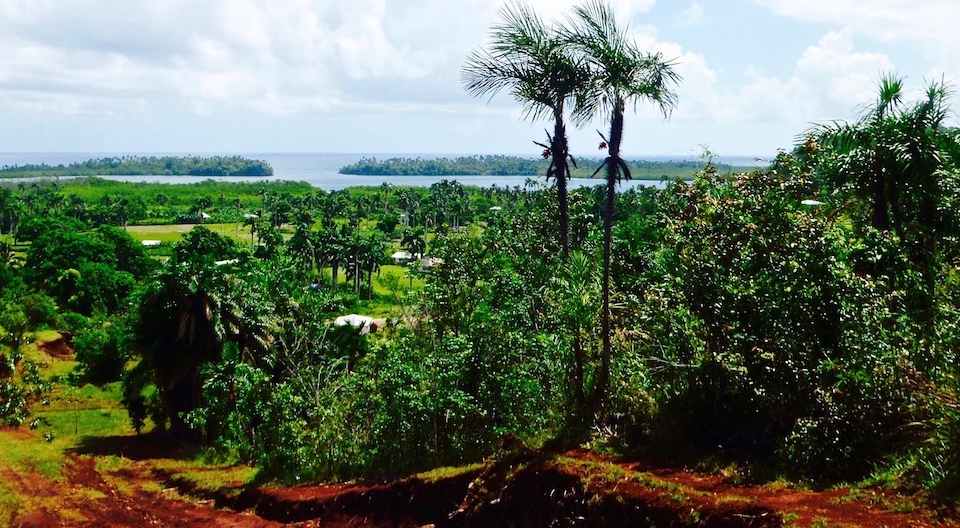
Ecological farming within Alexander Humboldt National Park
In Baracoa, Alexander Humboldt National Park offers several trails to discover the region’s endemic flora and fauna, as well as a boat tour of Taco Bay, the maritime portion of the park.
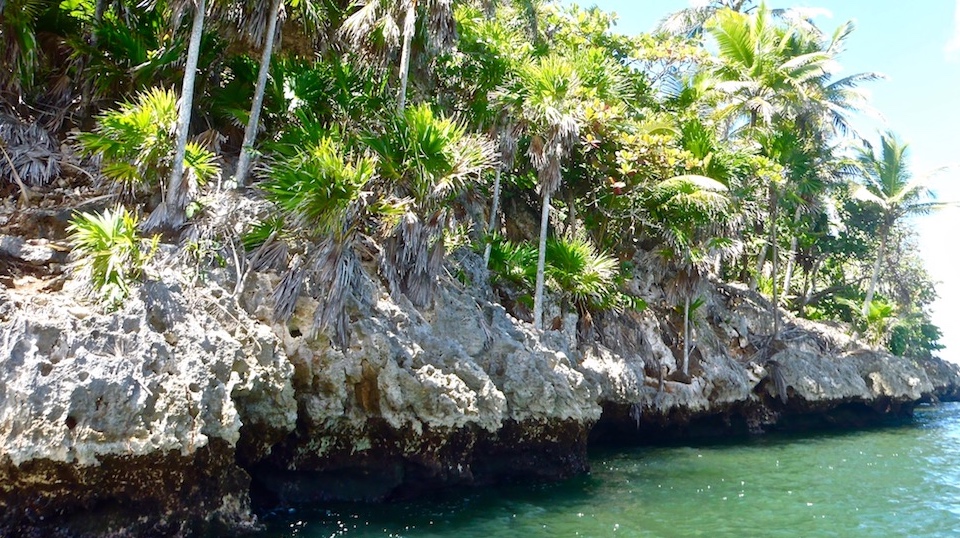
If you wish to get acquainted with the ecological culture of the 3,000 people living within Humboldt Park, you can combine a short trail or the bay boat tour with a visit to some families in their farms.
An environmental education strategy
Local families’ ecological farming practices have their roots in the traditional peasant forms of production, constantly transformed to better integrate them in their natural surroundings.
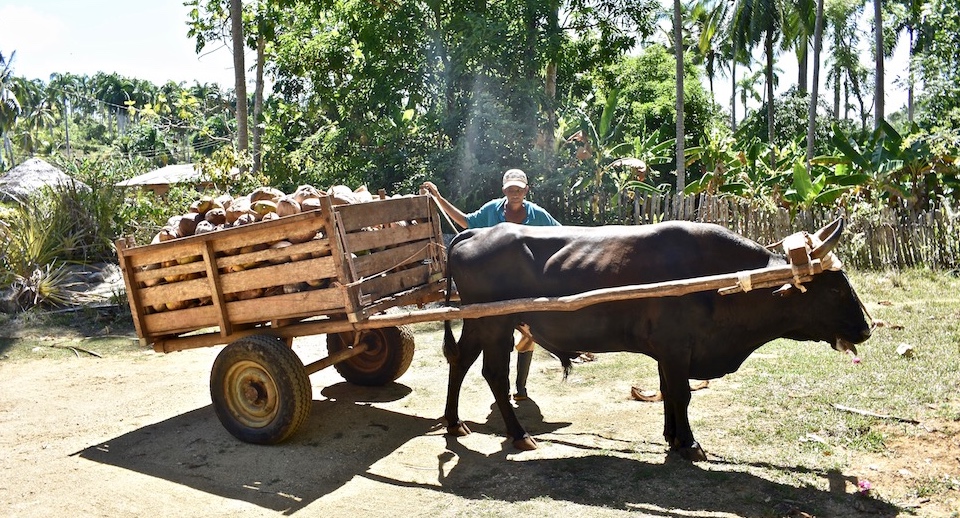
The staff at the National Park deploy a manifold workplan with the population. Environmental education channels include local elders’ councils, the creation of activism circles, thematic clubs at elementary schools, as well as the use of popular education approaches during traditional festivities all year long.
The ecological farm visits – a recently designed option
It’s been only three years since the launch of the ecological farm visits in Humboldt Park, in the communities of El Recreo, Miramar and Santa María. Coconuts are the main product in the local economy – and a key ingredient for some of the ecological products you’ll taste during your visit to Humboldt Park.
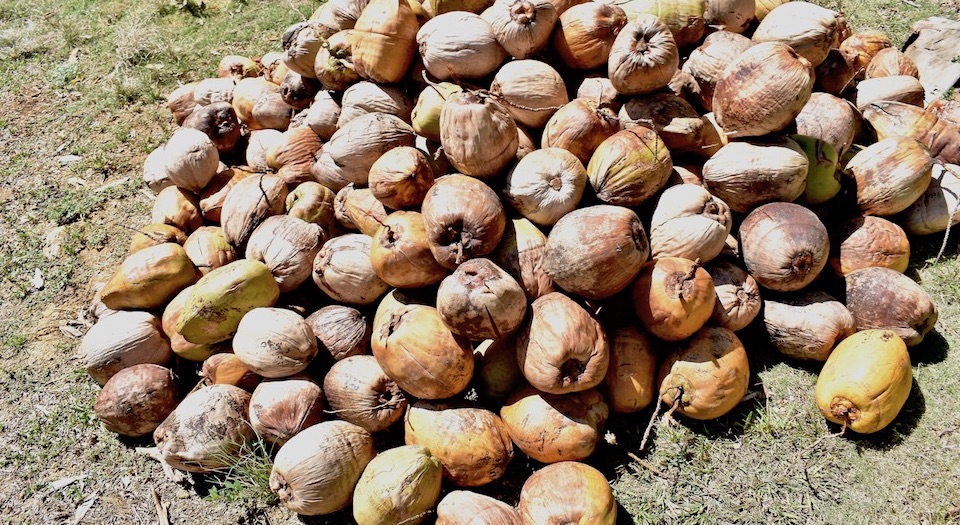
Indeed, local products include the region’s delicious (and organic!) classic sweets – coconut turrones, guava jelly, almond or peanut brittle and the traditional cucuruchos.
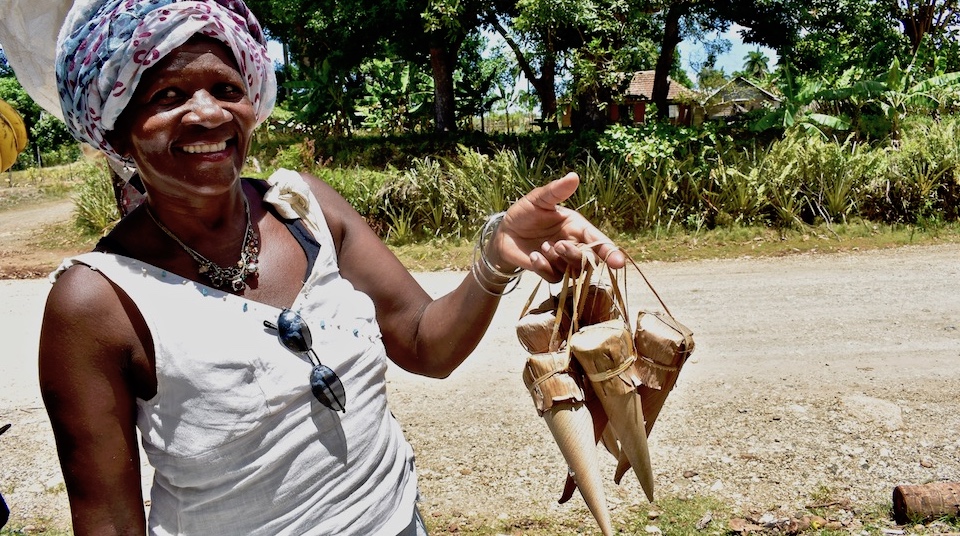
The traditional sweets at Humboldt Park are among the best and freshest you can try in the Baracoa region and they are an excellent source of energy when you explore the park’s trails.
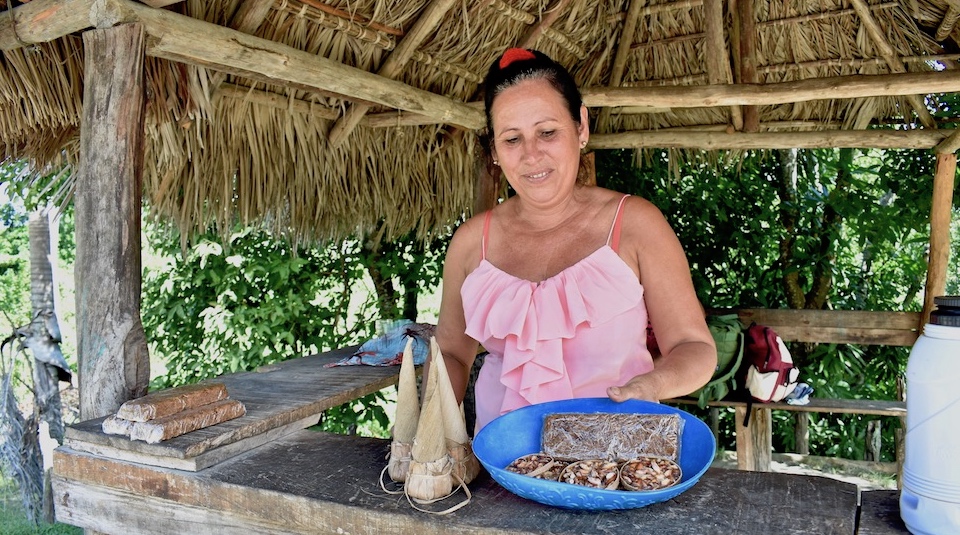
Some local families specialize in making natural fruit juices – no sugar nor chemical ingredients added. Others have as their mission to produce 100% organic fertilizers. Others yet favour preserving fruit by making a range of liqueurs – or by cultivating and drying aromatic herbs and medicinal plants.
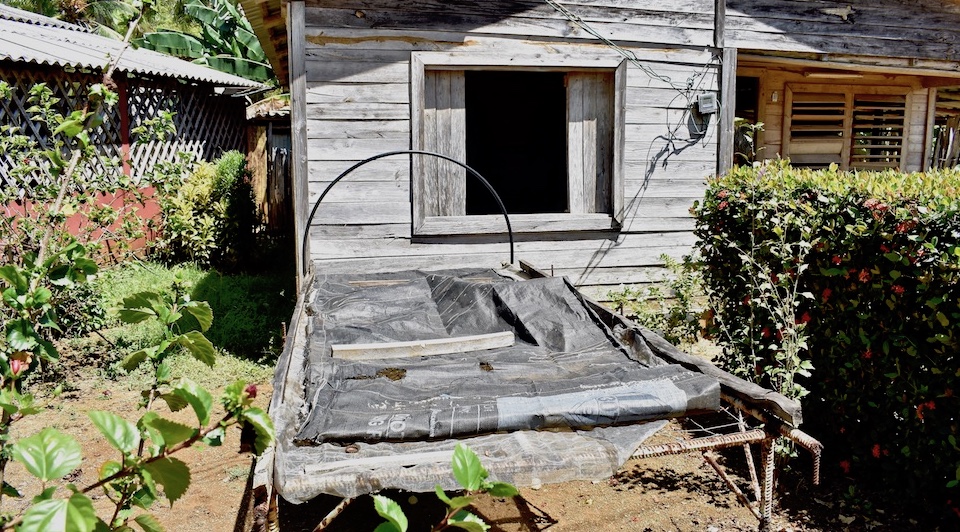
Welcome to Cary & Man’s ecological farm
Caridad and Mandiel welcome visitors at their mini-industry, where they produce natural juices, dehydrated fruit, fruit vinegars and dried herbs for culinary and medicinal uses.
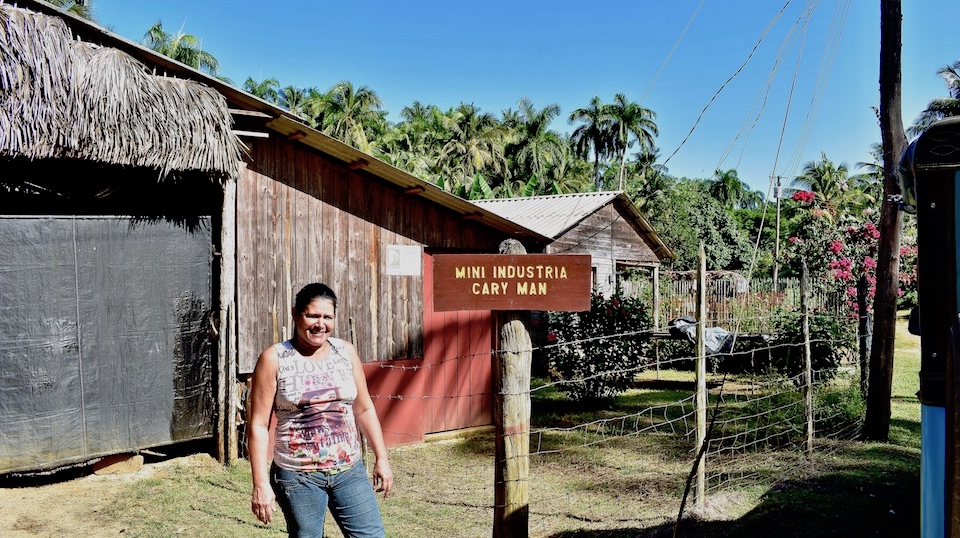
Using equipment entirely made of recycled materials, Cary and Man and their family produce mango, papaya, guava and pineapple juices, which they sell to restaurants and hotels.
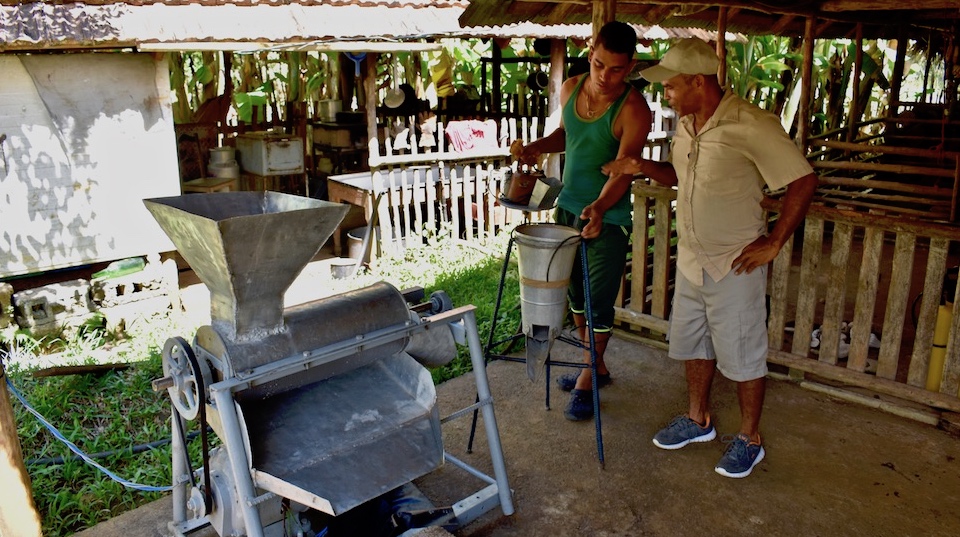
The juices they make are then poured into recycled bottles, most of them imported beer bottles that make it to Cuba for consumption at tourism facilities.
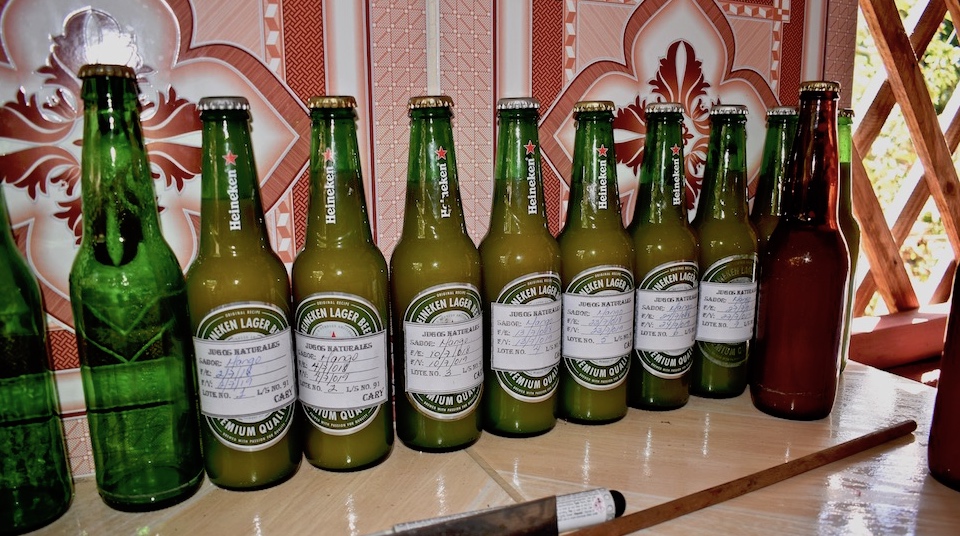
One of Cary and Man’s sons shows us the equipment used to press caps on bottles. He knows well his family’s trade and takes part in it, but as a social worker he dedicates most of his time to serve senior people living in his area of Humboldt Park.
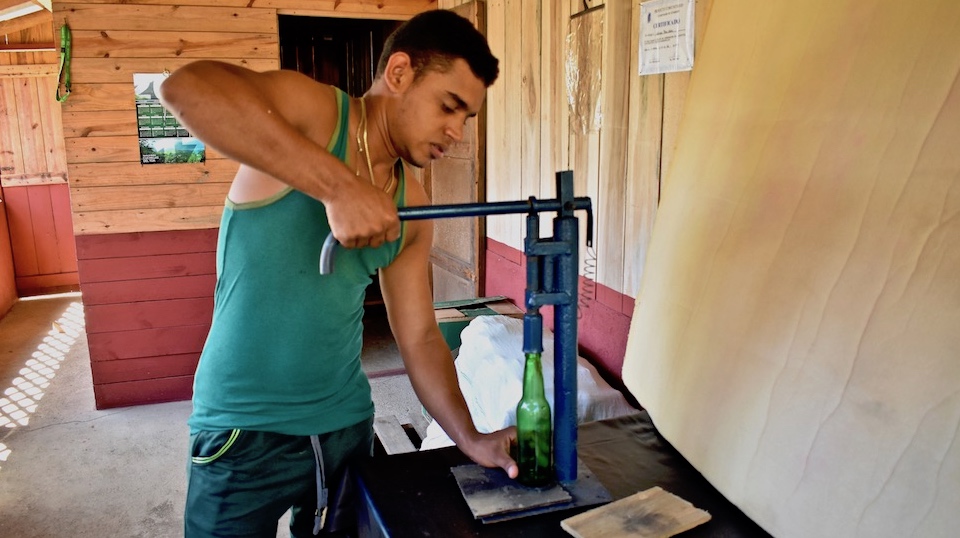
Cary and Man are certified in fruit and vegetables conservation. They volunteer to offer workshops to local women, thus sharing their savvy in various areas of ecological farming.
The Oliveros’ ecological fertilizers
Our second visit takes us to Doyle Oliveros’ family farm. Doyle uses a self-production approach, with a specific emphasis of organic fertilizers.
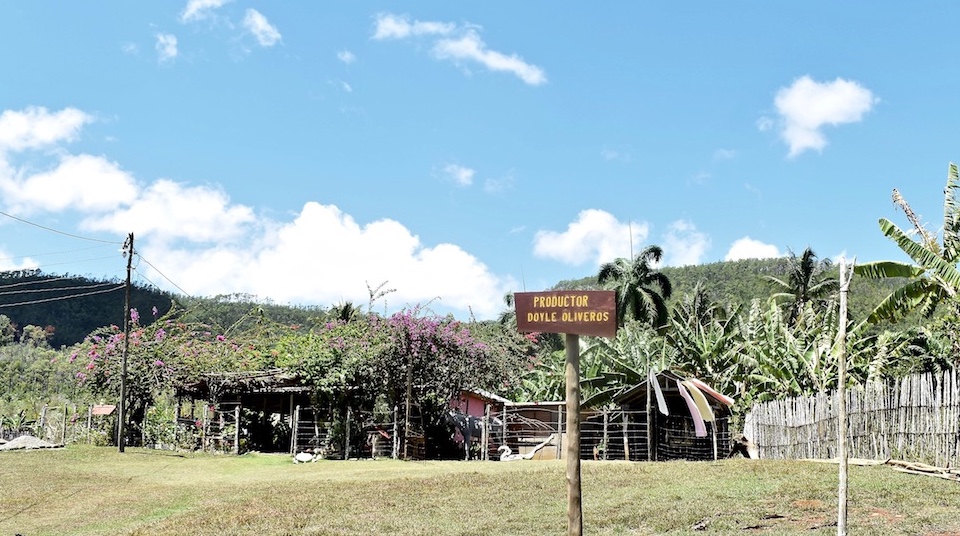
His organic fertilizers include sheep manure and the residues of the vegetables he grows in his farm – cucumber, beans, green beans…
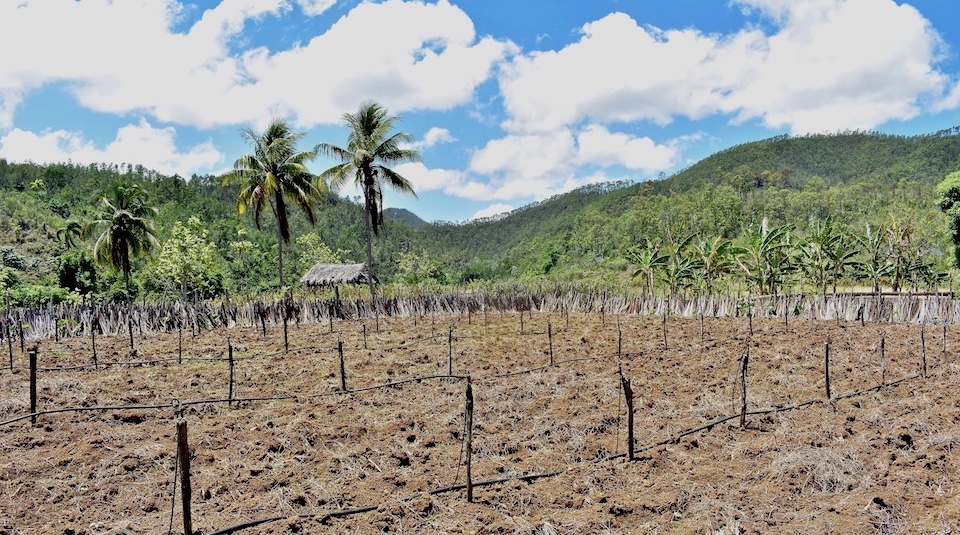
Doyle shows us a space where he has been producing organic fertilizer with the plants and trees debris he collected after hurricane Matthew battered the region in October 2016. This process has yielded an excellent organic matter to fertilize his lands.
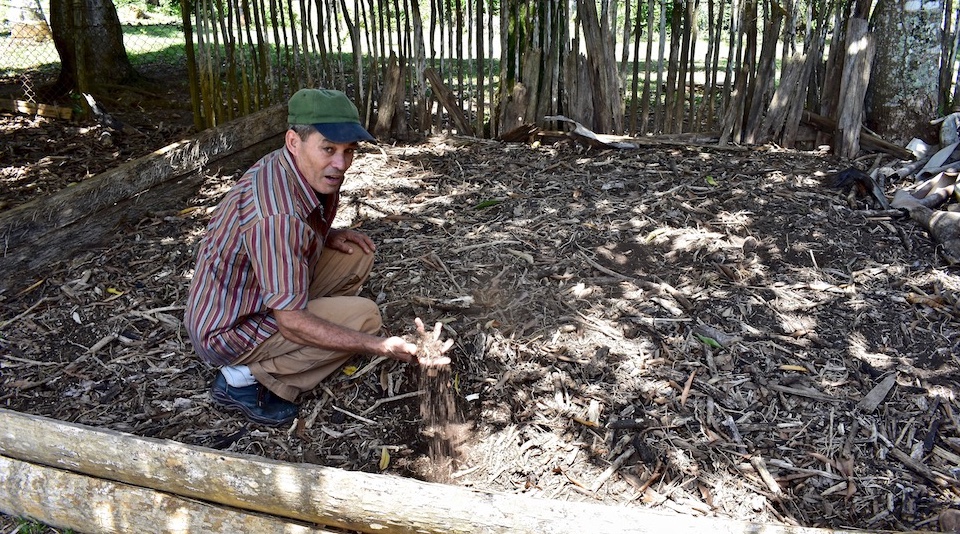
Since 2011, Doyle attends courses in the context of a range of projects. These include courses in places across Cuba, as well as exchanges with ecological farmers in other countries – Chile, Nicaragua, Costa Rica. It’s all about mutual learning during such visits.
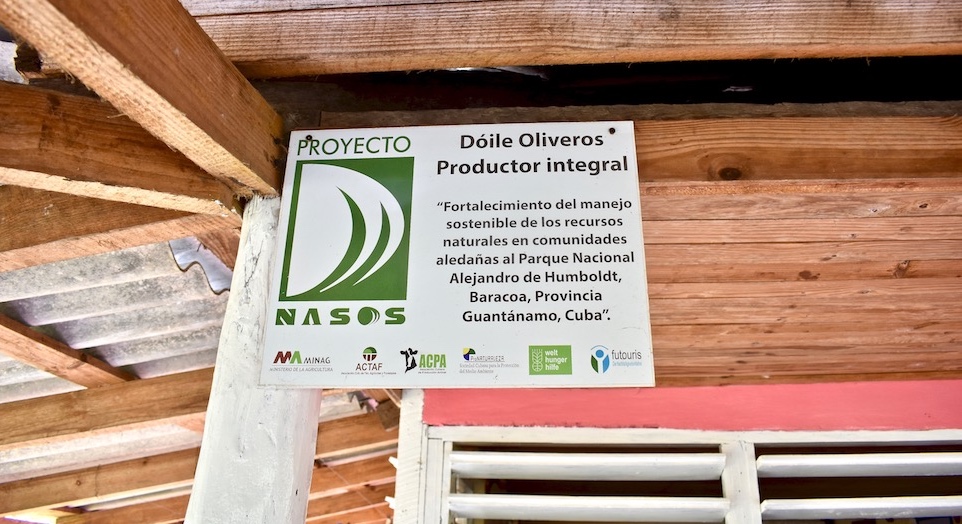
Doyle’s family favours crop rotation throughout the year and they their own seeds. Harvest residues are left on the soil. The family lets sheep graze using a sector-by-sector shepherding approach, thus distributing manure all over their land and allowing for a natural ‘slashing’ process.
Organic fruit wines: the Durán family farm
Right by Doyle’s place we find the Durán family farm. Outdoors, the sun is merciless. Made out of traditional materials such as palm tree wood planks, the Duráns home is cool and comfortable.
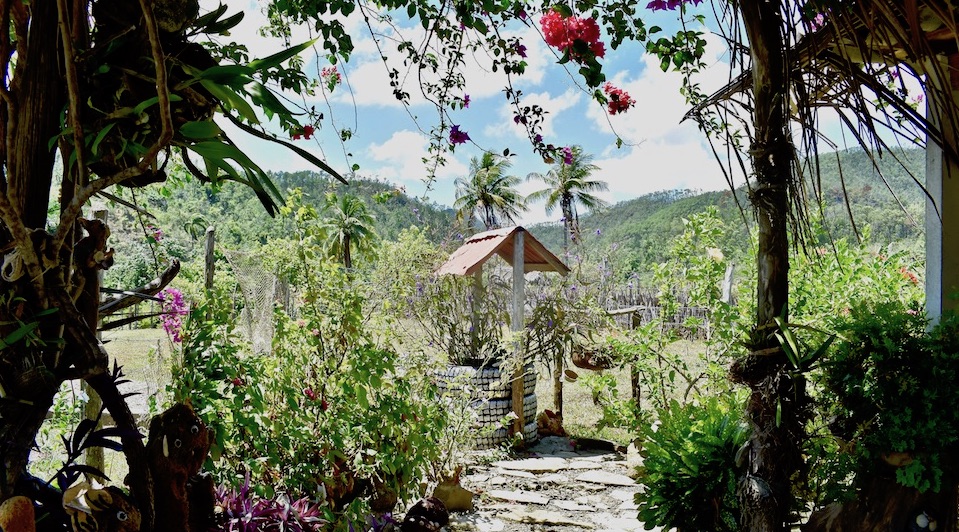
Nelson is known in the region for his delicious organic fruit liqueurs – anoncillo (that is ginep, guinep, quenepa, chenette, skinup, skinnip, kenèp or Spanish lime), papaya, cashew, guava, banana liquors… The day of our visit, the Durán grand-mother proposed that we taste their saúco (elderberry) liquor.
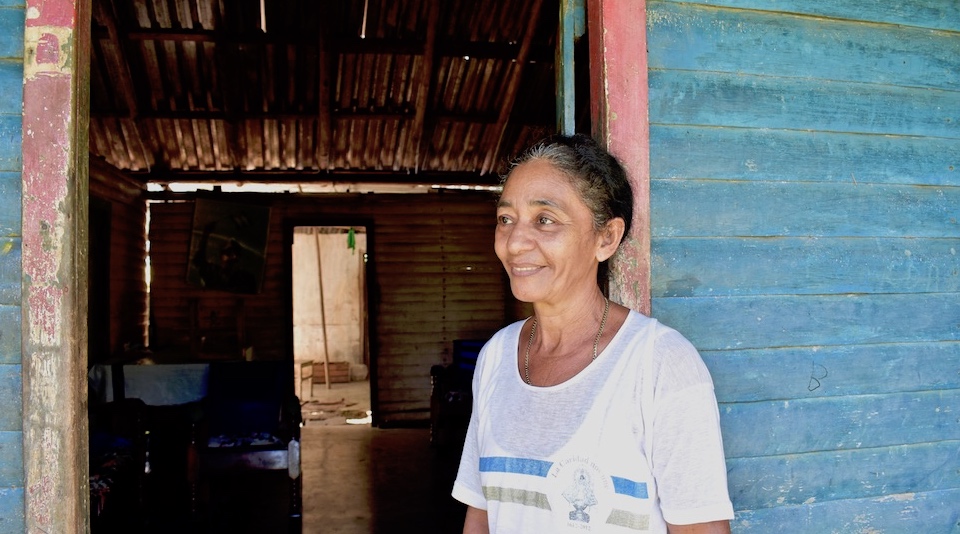
A good saúco wine takes 40 days to be made. This liqueur turned out to be truly delicious! Nelson explained to us that saúcois an excellent anti-inflammatory plant, it purifies blood and is used in cataplasms.
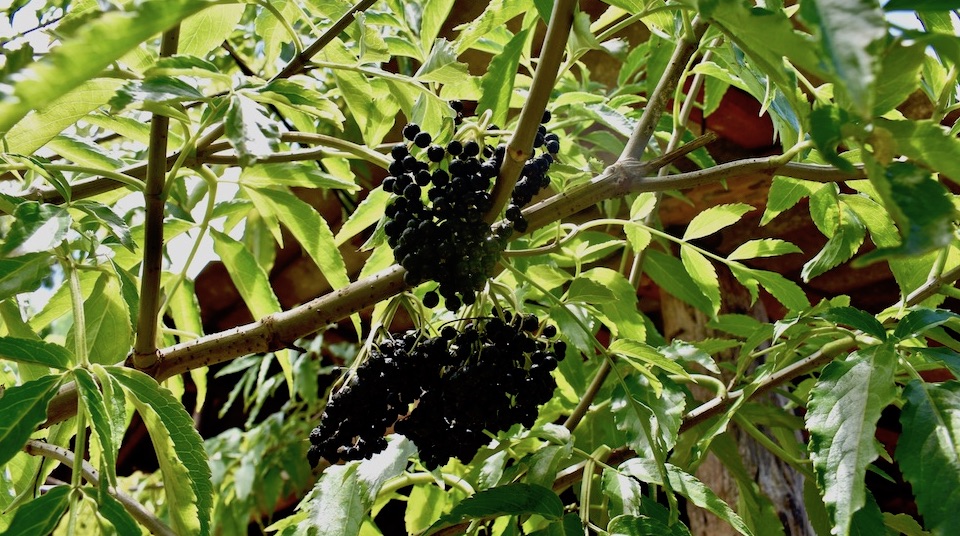
The Duráns produce roughly 1,000 bottles of fruit wine per year. Thus, all the fruit used is not lost, but preserved beyond the corresponding season and thoroughly enjoyed year-round.
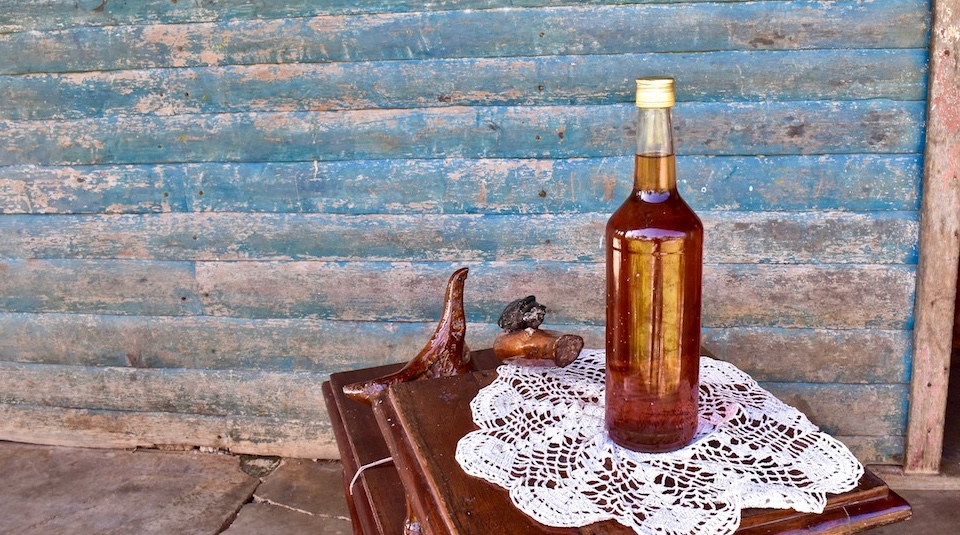
And so, after these 3 stimulating family farm visits, we are ready to hit one of Humboldt Park’s trails!
Other places in Baracoa where you can meet agro-ecologists
The hamlet of Quibiján, in the Cuchillas del Toa Biosphere Reserve, is another place where you can meet families who have developed interesting ecological farming models.
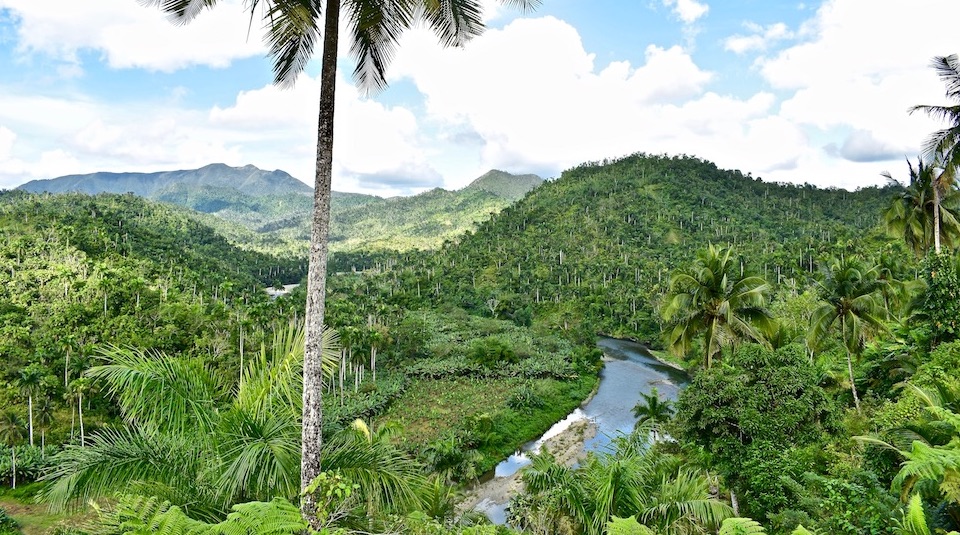
You may also find interesting to hear that there is a small urban organic garden of the ‘organopónico’ kind in the heart of Baracoa’s old quarters, with a beautiful view of the bay…
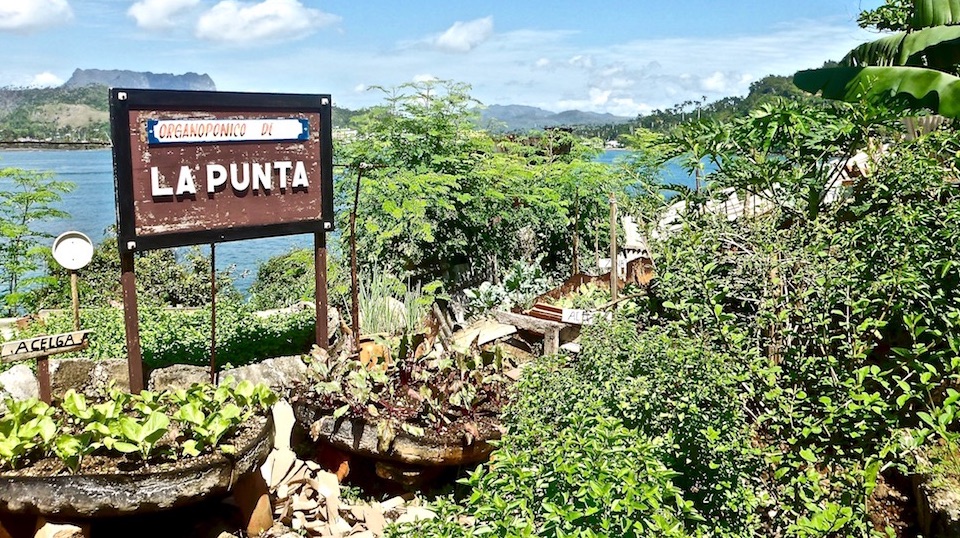
If you are a chocolate lover, don’t miss visiting Finca las Mujeres (Women’s Farm), near the El Güirito hamlet, where you’ll be welcome for a presentation on how Baracoan peasants grow, harvest and transform organic cacao into an exquisite and nutritious chocolate drink, local style.
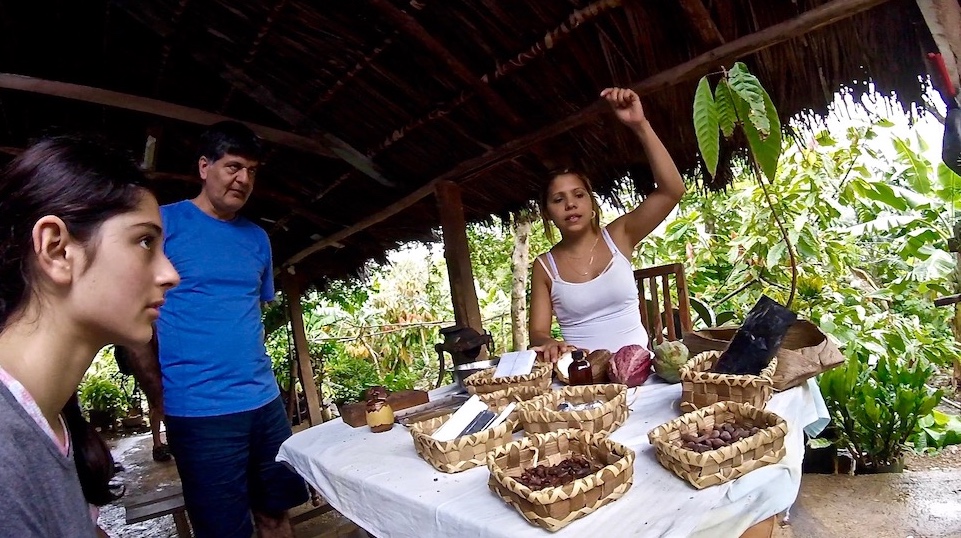
Did you know?
A yearly calendar with key dates is used at Alexander Humboldt National Park to engage local folk in cultural traditions transmission and learning how to improve agricultural practices in view of environment conservancy. Various types of events (dance parties, community meals, workshops) offer the ideal context to cook traditional dishes in an ecological manner and share knowledge of traditional plant-base medicine.
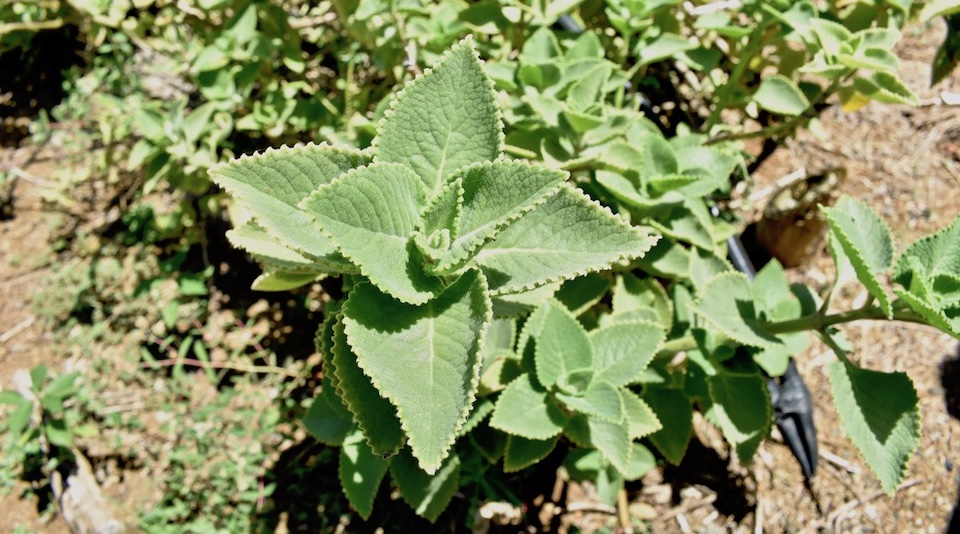
For instance, on March 8thcommunities hold workshops that place women at the centre of conservancy. On May 17th, when Cuba celebrates its peasants, a range of workshops take place in different places across the region. By the way – these activities can welcome visitors!
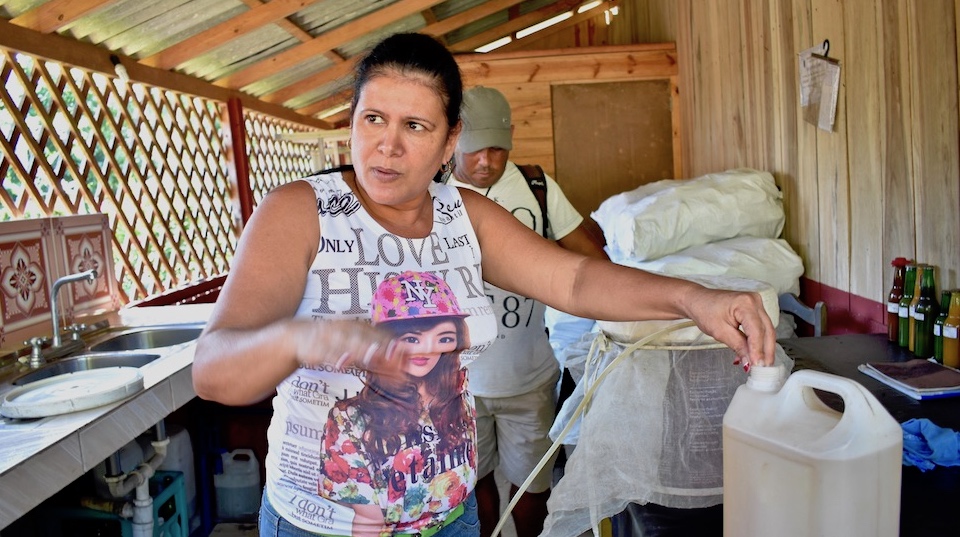
With fishermen, educational initiatives include fostering healthy and ecological eating, training on legislative and regulatory expectations about fishing and coastal areas, workshops on threatened species and factors that lead to extinction.
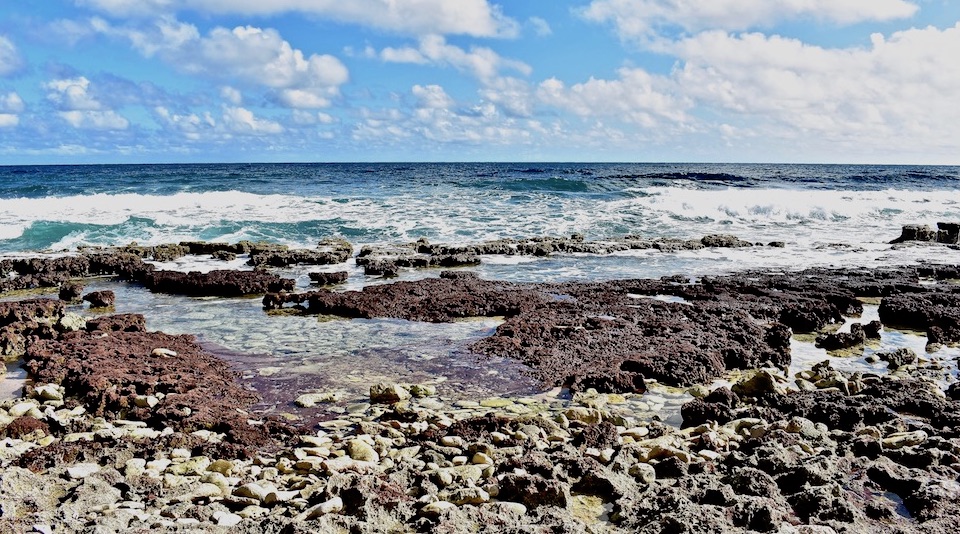
The population at Humboldt Park also benefits from training in permaculture – getting to know one’s garden; medicinal plants; species that fix nitrogen (very scarce in some of the zones where these families live); using plants to control plagues; making the most of rain water; optimizing the farm’s set up.
Practical information and budget details
- The agro-ecological visit is an optional addition you can request, included in the price for one of the park’s trails (except the Balcón de Iberia trail) or the Taco bay boat ride. This visit has to be requested 1 or preferably 2 days in advance of your visit to Humboldt Park, at the Ecotur agency in Baracoa. The families and farms you will visit may vary from one date to another.
- To access the National Park, you have to go through the facilities at the entrance, which have a Visitors Centre as well as washrooms.
- The agro-ecological visit, the various trails and the boat ride in Humboldt Park count on excellent guides who belong to local communities and who know these lands since their childhood. Their knowledge covers the history of the protected area, the flora and the fauna, the area’s peasant culture and traditional medicine. They are really good at spotting the different plant and animal species that could otherwise go unnoticed by visitors were they to do the hiking on their own. Using a guide is compulsory – you cannot explore the park unaccompanied.
- This excursion in Humboldt Park costs 1,230 CUP per person and that includes the guide service.
- Ecotur agency runs excursions from Baracoa for a global price of 56 EUR (or USD) per person, which includes transportation (round), the entrance fee, the guide service and, on the way back, a one-hour stop at Maguana beach. For that price, you can do one of the trails or Taco Bay the boat ride. The agro-ecological visit can be included if you request it in advance (one or preferably two days in advance).
- If you’d rather get to the park on your own, a taxi for the day to Humboldt Park charges 45 CUC. If you share this expense with 3 other travellers, the cost per person comes down to 11.25 EUR (or USD). An additional advantage of going there on your own is that you can check out off-the-beaten-path Mapurisí beach on your way back from the Park.
- Don’t forget to bring with you water to drink and a sandwich or other form of food.
- We encourage you to offer your guide a tip, an always welcome extra bit of income for a local family. Likewise, we encourage you to buy from local women the sweets they offer to visitors (almond or peanut brittle, or the grated coconut cucuruchos typical of Baracoa). Such treats can be a good source of energy during the hike. And such little expenses help more local families benefit from a sustainable tourism.
- We invite you to learn more about sustainable tourism in the Baracoa region.
Don’t miss the photos and videos of El Copal trail and El Recreo trail, nor the photos and videos of the boat ride in Taco Bay and the Balcón de Iberia trail in Alexander Humboldt National Park.
Activities, Baracoa, Sustainable Tourism
Tags: Adventure Tourism, Agritourism, Culture, Ecology, Forests, Hiking, Natural Medicine, Nature Tourism

Recent Comments
I REALLY like the idea of getting some delicious handcrafted organic sweets to give me energy for my hike! You don’t have to tell me twice ? Visiting the farmers and learning about their unique methods and products would be a highlight for me of a visit to the park.
Those sweets are tempting, right? We never fail to get some before engaging the trail… Then we buy some more to take home! 😉 Cucuruchos are unique and awesome, but the almond brittle is just too good too!!!
What an awesome experience and a great way to promote and also understand traditional farming methods! Let’s hope these continue for generations to come!
Thanks, Linda! Indeed, eco farmers at Alexander Humboldt National Park are quite good at cultivating traditional methods and integrating creative procedures. We too hope this we last forever! 🙂
Sounds like a great way to learn about the local farming methods and enjoy some beautiful landscapes at the same time.
Thanks, Jan! That’s exactly what this is about: meeting great folks, learning about eco farming the Cuban way, then going for an exploration and discovery of Alexander Humboldt National Park’s scenic trails! 🙂
I’d love to visit. The nature looks amazing and so much to learn. Ellie & I have visited a few organic farms on our travels and every single time we’re astounded how these methods produce better results than any alternative we know.
Hi Stefan! You are quite right to point out that ecological methods are not only the right thing to do but also what gives us the best results – now and in the long term. Visiting this farmers is quite a pleasure – they are so engaging, warm, easygoing, down to earth… Lovely human beings! 🙂